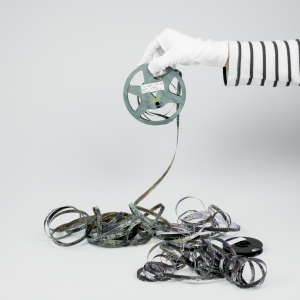
Artist talk with Müge Yıldız
on “Experimental Film Practices with Living Organisms and Biomaterials"
*
25.09.2025 Artist talk with Müge Yıldız
on “Experimental Film Practices with Living Organisms and Biomaterials"
at 10–11.30 on Zoom (request link via info@taidekoulumaa.fi)
*
Müge Yildiz is an artist, filmmaker and doctoral researcher currently based in Finland. She received a Finnish Cultural Foundation Grant to pursue her doctoral research at Aalto University, Department of Art and Media. She was also awarded the Finland Scholarship to study Visual Cultures, Curating, and Contemporary Art (ViCCA) at Aalto University School of Arts, Design, and Architecture in Espoo, where she completed her MA degree. Earlier in her academic journey, she studied Cinema and Philosophy at Galatasaray University in Istanbul, Turkey. Further, she enriched her education through cinema courses as an Erasmus exchange student at Paris 3, Sorbonne Nouvelle in France.
Her practice merges experimental filmmaking with hybrid analogue-digital techniques, focusing on eco-analogue filmmaking and bio-based motion picture film. She collaborates with microorganisms, employing both scientific and artistic methods to create dynamic visual compositions. Her work has been showcased at international festivals and institutions, including the BFI London Film Festival, Images Festival, and Anthology Film Archives. She has participated in the Oberhausen Film Seminar and the Istanbul Biennial Research Program. She has been awarded several prestigious grants, such as the SAHA Sustainability Fund and the ReFocus Fund. The SaDe Artist Fund supported her recent project Non/Living, and her Celluloid Film project was featured in the Future Materials Bank, an initiative of the Jan van Eyck Academie.
*
Image description: A close-up view of a strip of Super 8 film material, visibly altered through experimental processing. The film shows subtle textures and colour variations resulting from fermentation with Saccharomyces cerevisiae (yeast). The surface appears organic, with hints of translucency, mottling, and irregular patterns that reflect the interaction between the cellulose-based film and the biological process. The image highlights the materiality of the film as both a cinematic medium and a living substrate transformed through bio-art experimentation.
Image credit Niko Tampio



